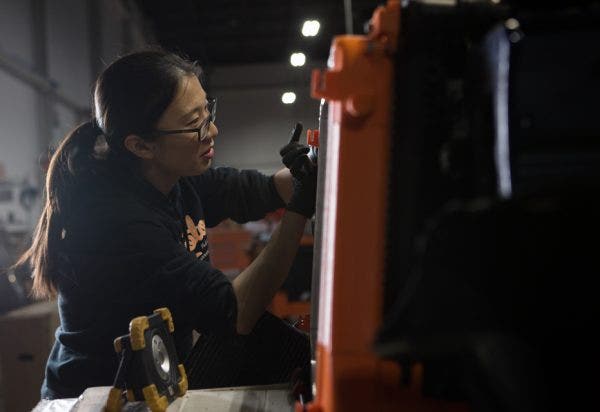
Intercooler Sandwich - 2015+ VW MK7 GTI/Golf R, Audi A/S3 Intercooler R&D Part 3 - Design Plans
Bigger is better has long since been an unofficial mantra of the automotive world. To go faster or further, you have to go bigger. Either by way of more cylinders, bigger turbos, thicker sway bars, the increase in size helps quench the thirst for speed. The Golf GTI and all its subsequent variants have been showing us since 1974 that sometimes smaller can be just as good, and plenty of speed and practicality can come in a condensed package. The same can be said for our intercooler design for the latest generation of VW's compact chassis. It's not the size that matters, but rather the innovation packed inside.


Limited space in the engine bay is always a challenge when it comes to designing new products, but in the case of the MK7, it was a major obstacle.
With the MK7 especially, available space is the first major hurdle to overcome. If you revisit the stock review of the MK7's intercooler, you'll see that the intercooler is the meat in a heat exchanger sandwich, all mounted on the front of the car. You should already be able to see the issue. Once the intercooler soaks with heat, as stock intercoolers are prone to do, that heat can transfer off the intercooler's fins and directly into the radiator. This is not good for keeping your big performance in a small package, well, performing. Granted, no matter the design, the heat dissipation is heading directly for the radiator's fins. However, reducing the sustained heat soak of the intercooler's core will help keep coolant temperatures down.

VW's initial design and placement of the stock intercooler left us with limited space to expand. However, the performance of an intercooler isn't reliant on the size alone.
To add an extra degree of difficulty into coming up with a new design, the meat in that heat exchanger sandwich is also load-bearing. In order to ensure a direct-fit and no-modification-required product, our new design not only has to mount in the same position, but also improve on the existing intercooler with very limited space to expand into. Our engineer is on the case, though, and has already been working up a new heat exchanger that will help cool off your hot-hatch.

The bigger is better saying might not directly corelate with the GTI, but it still rings true when it comes to intercoolers. Increasing the size of the charged air cooler is the first step to improve heat dissipation. Even though available space in the build envelope is scarce, our engineer was still able to add a few millimeters to the height and width of the core, giving our new intercooler a serious bump in surface area and volume and effectively filling any gaps left by the stock unit.

Our engineer was able to find room to grow with our new design and filled out the build envelope.
The performance of this intercooler isn't going to rely solely on its size. The size does help to improve on the general makeup of the new heat exchanger, but the gains are only to the general performance. There will need to be some additional improvements.
The first step is to update the core construction. The lightweight tube-and-fin makeup of the stock unit is easy for Volkswagen to produce in mass quantities, however, this layout can't stand up to the heat, especially under heavy load or after a tune. Our new bar-and-plate construction features larger bars for the charged air to flow through, allowing for an improved flow as well as better heat dissipation characteristics.

Our sleek new end tank design will make sure all of your charged air is making full use of the tall bar-and-plate core by streamlining flow characteristics and incorporating diverters.
Speaking of improving the flow, the next step in improving the construction is to re-work the intercooler's end tanks. The stock, plastic design worked to spec with the smaller core, but to keep up with the increased flow, we needed to make some updates. We continued to improve the construction materials, and swapped out the plastic end tanks for an all-aluminum construction, then increased the size to meet the new demands of the larger, freer flowing core. We're also planning on adding internal diverters within the end tanks to ensure that we're making full use of the improved core.

While VW made designing a new and improved direct-fit intercooler difficult at every turn, one aspect is easy enough to work with, which is the inlet and outlet. Typically, the dimensions for these ports are the limiting factor in how much power an intercooler can handle. Since Volkswagen refrained from using proprietary quick-disconnects for their piping, we can now push the upper limits of the stock rubber couplers, reducing flow restrictions while still being compatible with the stock intercooler piping.
If you take a look back at our stock review on the MK7's intercooler piping, you can see that while it's good enough for daily driving, it might run into issues once you start pushing more boost through them. Not to worry though, since we plan on making improvements to the charged air channels while we're at it.
Thanks for Reading!
-Nick




